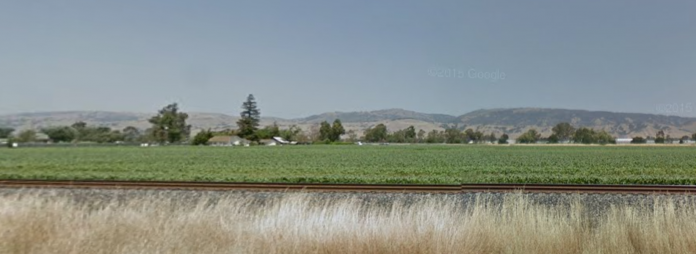Should Gilroy grow out and grow bigger, or concentrate on creating a compact, efficient and thoughtfully planned community surrounded by green hills and agricultural lands? The answer may be a bit of both.
Next Monday, the City Council will consider adding more than a square mile of land to Gilroy. Thousands of homes are envisioned on the farmlands west of Monterey Highway up to Fitzgerald Avenue.
Along with other approved big developments, such as Glen Loma Ranch and Hecker Pass, the new neighborhoods would increase the number of homes in Gilroy by 40 percent—or much more. That’s a lot of growth.
The developer’s forecast of 4,000 homes assumes the densities permitted under Gilroy’s 2002 General Plan. But according to city planning, “about 5,300 residential units would be required within the project site to meet minimum density standards” of the city’s new draft general plan.
It would be like dropping a city bigger than Scotts Valley, Half Moon Bay, Capitola or King City between Morgan Hill and Gilroy.
Fully built, Gilroy would be a city of 80,000+ residents and overtake Cupertino, Palo Alto and Milpitas to become the county’s fifth biggest city—possibly even pass Mountain View to become number four. (Gilroy is currently the eighth most populous of the county’s 15 cities.)
The problem is that no one really knows how much housing would be built, and what’s the right number. The new General Plan hasn’t even been adopted yet. Somehow, though, the City Council seems ready to consider recommending this humongous annexation to the county’s Local Agency Formation Commission (LAFCO), which regulates sprawl and encourages open space.
Before we welcome 30,000 new neighbors, with their cars and their pets, let’s have a community-wide discussion. The Planning Commission voted against recommending the annexation and rezoning, worrying that the city was moving too hastily. The City Council would be wise to take some time to be thoughtful and deliberate as well, and to seek maximum public involvement in a project that will impact the quality of life for all Gilroy residents.
There are many issues to consider:
• Gilroy has the slowest emergency response times in Santa Clara County. How will it provide police services, and will new revenues support the new substation suggested by developers?
• Three or more schools will have to be built.
• Developer studies admit that there is no way to get around increased peak time congestion on Hwy. 101 generated by new commuter-residents.
• Planning commissioners fear new housing will wipe out infill development initiatives needed to revitalize downtown and support transit initiatives, such as the high-speed rail terminal.
• Building housing without creating jobs will worsen the jobs-housing imbalance and place more stress on city budgets and local services.
Suburban sprawl destroyed downtowns in Los Angeles and San Jose and turned those cities into traffic-choked messes. Gilroy’s historic center needs investment and attention, but can that occur if city resources, services and infrastructure are being directed toward massive planned developments at Gilroy’s northern tip?
Should Gilroy grow out and grow bigger, or concentrate on creating a compact, efficient and thoughtfully planned community surrounded by green hills and agricultural lands? The answer may be a bit of both, but it’s a conversation worth having and certainly not a decision to be rushed through while everyone’s getting ready for the holidays.












